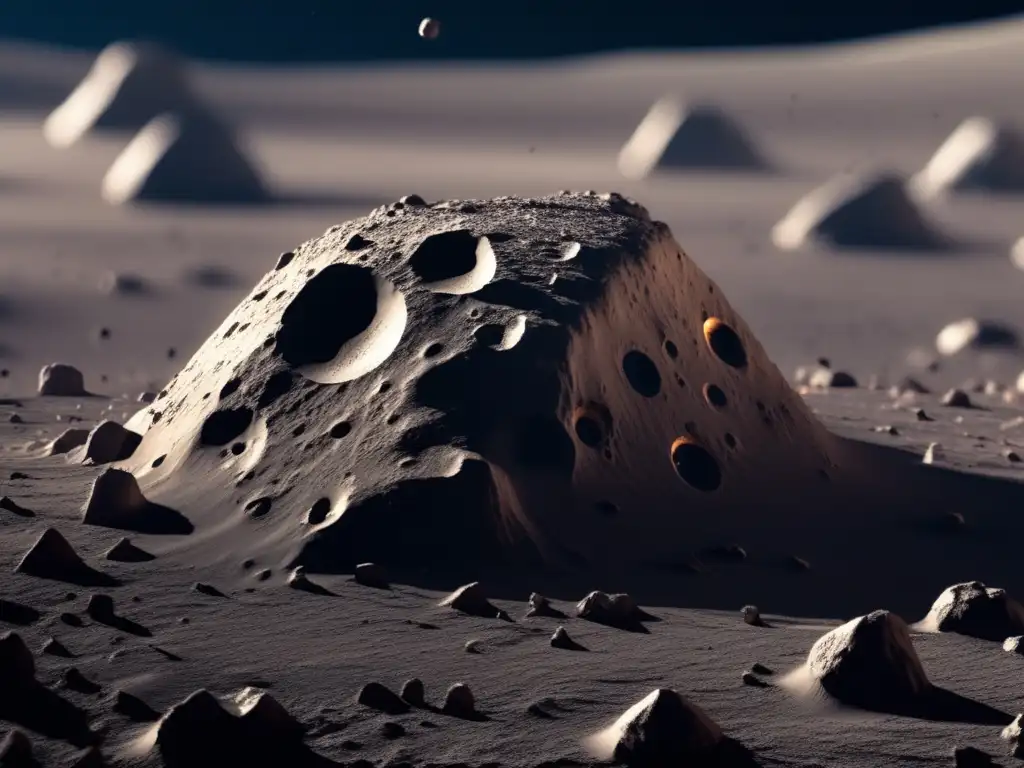Asteroid Armageddon: Our Planetary Defense Strategies

Introduction
Asteroids have been present in our Solar System for more than 4.5 billion years and have always been a topic of interest for scientists. However, their impact potential on Earth has only recently come to the forefront of our attention. Due to increasing awareness and advancements in technology, our understanding of asteroid impact hazards has improved. The potential of a catastrophic asteroid impact event, like the one that led to the extinction of the dinosaurs about 66 million years ago, has caused significant concern among scientists and the general public. This article will discuss everything related to planetary defense strategies against asteroids, including detection, characterization, mitigation, and prevention.
Detection and Tracking

Ground-based Observation
Ground-based telescopes are the primary tools used for detecting and tracking asteroids. They provide a wide field of view, making it easier to survey the sky, and also enable scientists to determine the size, composition, and trajectory of the asteroid. The primary observatories currently used in detecting asteroids are the Pan-STARRS, the Catalina Sky Survey, and the Space Surveillance Telescope (SST).
Space-Based Observation
Space-based telescopes have the advantage of being free from atmospheric interference, making them more efficient in detecting and tracking near-Earth asteroids. The NEOWISE (Near-Earth Object Wide-field Infrared Survey Explorer) is one such telescope that observes using infrared light, which allows it to detect dark, low-reflective asteroids that are difficult to spot using traditional methods.
Data Sharing and Collaboration
Sharing data among different observatories and organizations worldwide is essential in improving asteroid detection and tracking accuracy. The International Asteroid Warning Network (IAWN) and the Space Missions Planning Advisory Group (SMPAG) are two groups that collaborate to share data and improve the global response to asteroid threats. They also provide warnings and response recommendations when needed.
Characterization

Remote Sensing Techniques
Once an asteroid has been detected and tracked, its size, shape, composition, and rotational state must be characterized. Remote sensing techniques, such as radar and spectroscopy, are used to obtain this information. Radar imaging can provide detailed images of an asteroid's morphology and topography, while spectroscopy can determine its mineralogical and chemical properties.
In-situ Analysis
If an asteroid is determined to pose a significant threat to Earth, scientists may send a spacecraft to take in-situ measurements. The NASA OSIRIS-REx mission to asteroid Bennu is an example of such an initiative. The spacecraft collected samples from the asteroid's surface, which will be analyzed to gain insight into the asteroid's composition and formation history.
Asteroid Hazard Scale
The Torino Impact Hazard Scale and the Palermo Technical Impact Hazard Scale are two scales used to assess the potential impact hazard of an asteroid. These scales categorize asteroids based on their likelihood of impacting Earth and the resulting impact consequences.
Mitigation and Prevention

Kinetic Impactor
A kinetic impactor is a spacecraft designed to collide with an asteroid at high speed and change its trajectory. This method involves slamming into the asteroid to nudge it off its collision course with Earth. The NASA DART (Double Asteroid Redirection Test) mission, scheduled for launch in 2021, is an example of this approach.
Gravity Tractor
A gravity tractor uses the gravitational force between a spacecraft and an asteroid to alter the asteroid's trajectory. The spacecraft orbits the asteroid, and the gravitational pull between the two objects changes the asteroid's orbit over time.
Nuclear Explosive Device
This method involves detonating a nuclear device near or on the asteroid's surface to alter its trajectory. While this approach is effective, it is also highly controversial due to potential environmental and political ramifications.
Frequently Asked Questions

-
How can we predict if an asteroid will hit Earth?
Asteroid detection and tracking methods allow scientists to predict an asteroid's close approach to Earth and determine if it poses a threat.
-
What is the probability of an asteroid impact event?
The likelihood of an asteroid impact depends on a variety of factors, including asteroid size, trajectory, and frequency of impacts.
-
Can we stop an asteroid impact event from happening?
With the help of detection and mitigation strategies, scientists can reduce the probability of an asteroid impact event.
-
What are some of the challenges we face when protecting Earth from asteroids?
Some of the challenges include limited funding, incomplete asteroid data, and the need for international collaboration and cooperation.
-
What is the role of the public in planetary defense against asteroids?
The public can play a significant role in supporting asteroid research, raising awareness of the potential threat, and participating in citizen science projects that help detect and track asteroids.
Conclusion
Planetary defense against asteroid impacts requires a combination of detection, characterization, mitigation, and prevention strategies. The increasing awareness and understanding of asteroid hazards have led to significant progress in planetary defense technology and initiatives. However, there is still a need for more funding, collaboration, and innovation to safeguard Earth from the threat of an asteroid Armageddon. By working together, we can reduce the impact of potential asteroid threats and ensure the safety of our planet for future generations.
Additional Resources

For more information on planetary defense against asteroids, visit:
- NASA Planetary Defense
- Center for Near-Earth Object Studies (CNEOS)
- European Space Agency (ESA) Planetary Defence
 Cosmic Shields: Techniques And Tools For Asteroid Defense
Cosmic Shields: Techniques And Tools For Asteroid Defense Defending The Cosmos: Strategies Against Asteroid Threats
Defending The Cosmos: Strategies Against Asteroid Threats Beyond The Asteroid: The Science Of Planetary Defense
Beyond The Asteroid: The Science Of Planetary DefenseIf you want to discover more articles similar to Asteroid Armageddon: Our Planetary Defense Strategies, you can visit the Planetary Defense category.
Leave a Reply

Articulos relacionados: